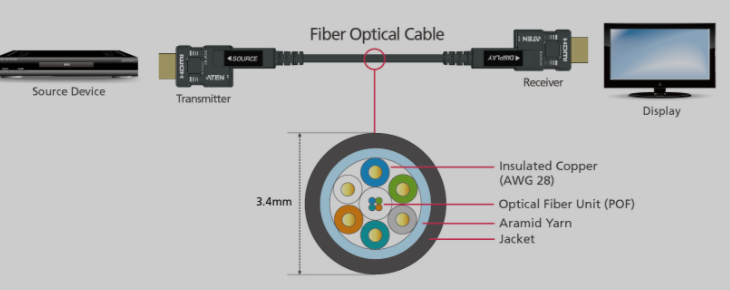Oufu Optical Fiber Cable Co.,Ltd
Address: Shenyang, Liaoning, China
Contact person: Manager Zhang
Phone: 400-964-1314
Mobile phone: +86 13904053308
【whatsapp && wechat】
2024-10-24 1618
Parts Connection USB Fiber Optic Cable: A Detailed Breakdown
In the realm of modern technology, the USB Fiber Optic Cable has emerged as a powerhouse for high-speed data transfer and long-distance connectivity. This advanced cable combines the versatility of the Universal Serial Bus (USB) interface with the superior bandwidth and signal integrity of fiber optic technology. Understanding the parts connection within a USB Fiber Optic Cable is crucial for maximizing its performance and troubleshooting any potential issues. This article provides a comprehensive breakdown of the key components and their connections within a USB Fiber Optic Cable.

A USB Fiber Optic Cable consists of several intricate parts, each playing a vital role in ensuring seamless data transmission. The cable itself is a hybrid of traditional copper-based USB wiring and optical fibers, allowing it to leverage the strengths of both technologies.
USB Connector
Description: This is the interface at one end of the cable that plugs into a USB port on a computer or other device.
Parts Connection: The USB connector houses several small wires (typically four or more) that correspond to the power, ground, and data lines of the USB protocol. These wires are carefully soldered or crimped to the connector terminals.
Fiber Optic Adaptation: In a fiber optic version, the copper data lines are replaced or augmented by optical fibers that carry light signals. The transition from electrical to optical signals occurs within the connector housing or a nearby converter module.
Fiber Optic Core
Description: The heart of the cable consists of one or more optical fibers, which transmit data in the form of light pulses.
Parts Connection: The optical fibers are encased in a protective cladding to prevent light leakage and are often bundled together within a strengthening jacket. These fibers are precisely aligned and fused or spliced to connectors at both ends.
Termination: Fiber optic connectors (such as LC, SC, or FC types) are attached to the ends of the fibers, allowing for secure, low-loss connections to other fiber optic devices.
Converter Module (if applicable)
Description: In some USB Fiber Optic Cables, a converter module is necessary to translate between electrical signals (from the USB interface) and optical signals (within the fiber optic core).
Parts Connection: The converter module may be integrated within the USB connector housing or exist as a separate device. It contains electronic circuitry and optical components that perform the signal conversion.
Interfacing: The converter module interfaces with both the USB connector and the fiber optic core, ensuring that data is accurately translated and transmitted.
Protective Jacket
Description: The outer layer of the cable provides physical protection against damage from bending, crushing, or exposure to environmental elements.
Parts Connection: The protective jacket surrounds the entire assembly, encapsulating the fiber optic core, any converter modules, and the USB connector housing. It is typically made of durable, flexible materials like PVC or TPU.
Handling: Handle the cable with care to avoid bending it excessively or exposing it to sharp objects, which can damage the optical fibers.
Cleaning: Keep connector ends clean and free of dust or debris, as contamination can degrade signal quality.www.adsscable.cn
Inspection: Regularly inspect the cable for signs of wear or damage, particularly at the connector ends.
Compatibility: Ensure that the USB Fiber Optic Cable is compatible with your devices and supports the necessary data transfer rates.
The parts connection within a USB Fiber Optic Cable is a delicate balance of advanced technology and precision engineering. By understanding the core components and their interconnections, you can better appreciate the capabilities of this high-performance cable and take steps to maintain its optimal performance. Whether you're using it for high-speed data transfer, long-distance connectivity, or both, the USB Fiber Optic Cable stands ready to meet the demands of today's technology-driven world.